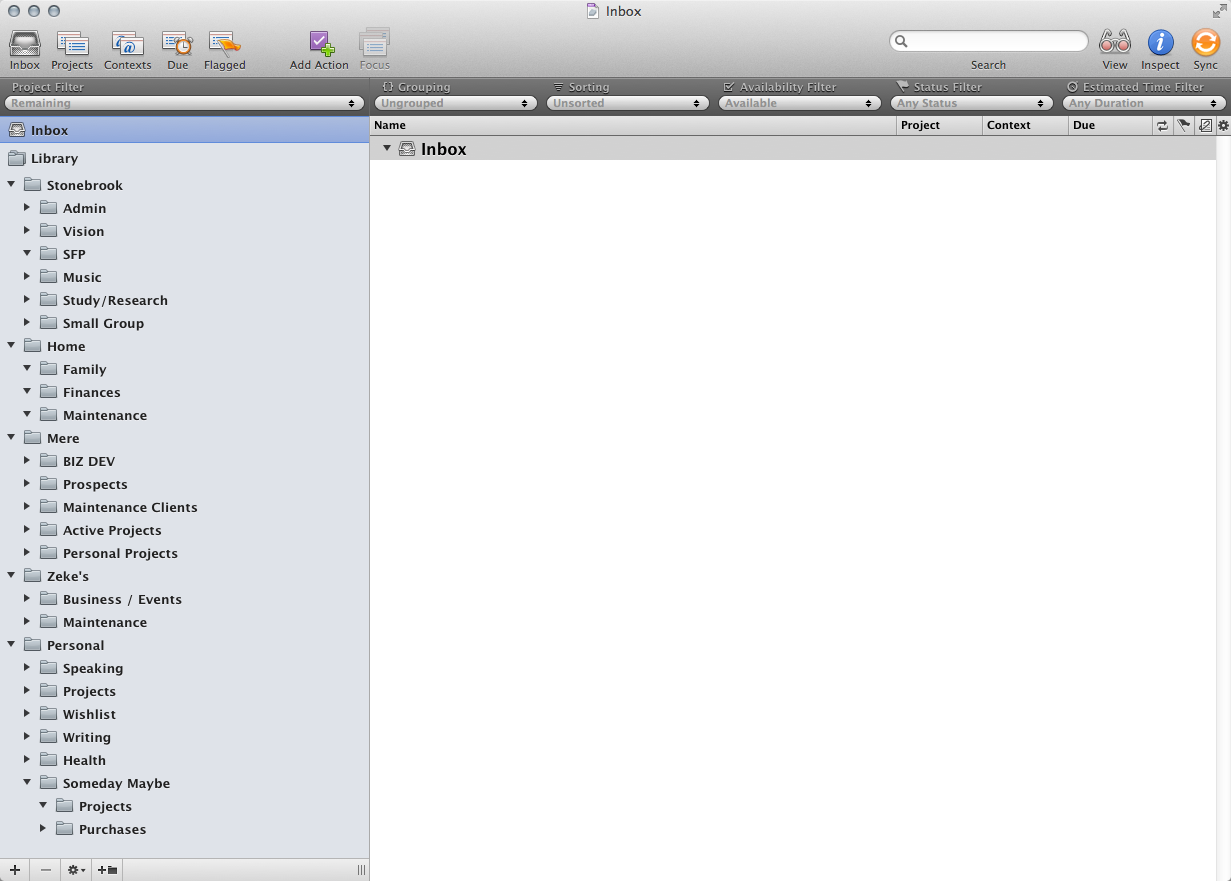Matt Perman’s new book has me re-examining my time and task management systems. I have seen some questions floating around about optimal OmniFocus setup, so I thought I’d share mine. I don’t know that it’s optimal, but perhaps this will be helpful, and if anyone has any insights to optimizing, that would be great!
Here’s a screenshot:
The Folder Structure
Top level: by area of responsibility.
I organize the top level by major areas of responsibility in my life. This is the top-tier differentiator in tasks for me. It helps me focus on a sub-set of tasks during my various schedule “zones”. My major areas are:
- Stonebrook – The church I serve as pastor, music ministry leader, and in theological training. (SFP = Spiritual Formation Process, the super-structure over our theological training, mentorship, and overall discipleship)
- Home – Speaks for itself. (If you look closely, you can see that I don’t currently have any tasks entered here, that is simply a failure to capture several that I know are currently outstanding. Â Going to remedy that after this post!)
- Mere – The Web Design and Development Agency I own and direct.
- Zeke’s – The non-profit, all-volunteer music, arts, an community events center I direct.
- Personal – Most all of my tasks fit somewhere above, but this is a space I use for tinkering, avocational projects, or things that cross areas.
- Someday Maybe – This should really go as a sub-folder in every one of the above top-levels.
Second level: by category of task.
I think I use this level because I’m a little OCD about taxonomies, but it helps me to know the difference between admin and vision type tasks in the case of church, or support vs. new work vs. business dev tasks in the case of  Mere.  These categories should be pretty self-evident?
Third level: by specific project
If a specific project contains a number of sub-projets, I’ll use a folder to contain them all. Â For example, under “Active projects”, I will have a specific site’s name that I am working on, with an OmniFocus project “card” for each major sub-project.
Perspectives
Contexts
I don’t use contexts. I find that it slows down my task capture to enter them initially, and it doesn’t help my review process or execution to have a context attached. Â My folder structure covers this.
Due
Per GTD principle, I almost never use deadlines. Â The only time a deadline becomes relevant are 1) in the case of a contractual agreement (in which case you cannot miss it), or 2) if a project or task becomes irrelevant after that time.
Flagged
I use flags extensively during my daily review. Â This sets up my tasks for the day. Â Most of the time I’m viewing OmniFocus in this perspective.
Hope this was helpful!


Leave a Reply